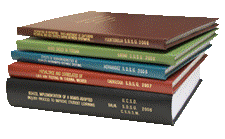Libraries, University of Nebraska-Lincoln

Archival Master’s Theses from the University of Nebraska-Lincoln
Date of this Version
7-1971
Document Type
Thesis
Citation
Thesis (M. S.)—University of Nebraska—Lincoln, 1971. Department of Home Economics.
Abstract
Faces portrayed in representative forms of five prominent art trends were compared with faces in tapestries woven during the same periods of time.The art trends represented were Early Christian, Gothic, Renaissance, Baroque, and Rococo.It was hypothesized that there is a positive correlation of faces and facial expressions in tapestries with the prevailing art trend of the time in which each tapestry was produced.In addition, it was hypothesized that the distinguishing characteristics of individual artists will be evident in tapestries for which they created the designs, or in which their designs served as inspiration.
The comparison of faces and facial expressions in tapestries with prevailing art trends has revealed strong support for Early Christian and Gothic art periods.Support for the Renaissance period is based upon the assumption that tapestry technology during the Renaissance was capable of producing any kind of facial detail.A positive correlation was found for seventeenth century Baroque art and tapestry designs.In addition, the eighteenth century Rococo period provided support for a positive correlation of faces in tapestries with the Rococo art trend.Though some of the periods provided stronger support for a correlation than others, none of the periods studied failed to provide some support.It is believed that enough supportive evidence was found to accept the research hypothesis that faces in tapestries may be positively correlated with art trends of the periods in which the tapestries were produced.
That distinctive characteristics of individual artists will be evident in tapestries for which they created the design, or in which their design served as inspiration, was the second hypothesis.It was found that tapestry technology was advanced enough during the periods studied to make identification of prevailing facial details possible.If tapestry weavers were capable of reproducing recognizable facial details in tapestries, they were also capable of reproducing distinctive characteristics of the tapestry designers or those who inspired designs.Support for this hypothesis was found in late Gothic, Renaissance, Baroque, and Rococo tapestries.Not all tapestries produced during this period have been identified according to designer and no Early Christian tapestry designers have been identified.It is believed that unidentified tapestries were designed by artists who are unknown and whose characteristic designs were not noted; consequently, these tapestries cannot be attributed to specific artists.Enough support has been provided to make possible the acceptance of the hypothesis that distinctive characteristics of individual artists are evident in tapestries for which they created the design, or in which their design served as inspiration.
Advisor: Viletta Leite


Comments
Copyright 1971, the author. Used by permission.